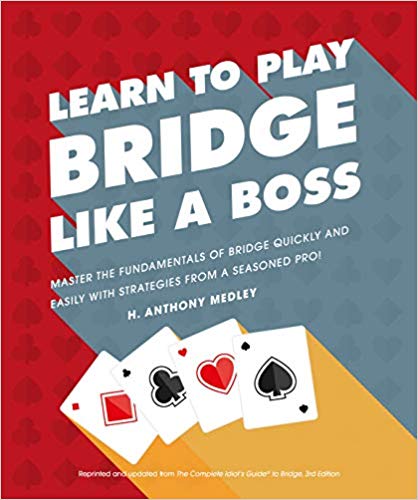|
Play like a pro with expert knowledge from a champion of the game If you don't know the ins and outs of play, bridge can seem like an intimidating game--but it doesn't have to be! Armed with the techniques and strategies in the pages of this book, you'll be bidding and winning hands like a boss! A good book for beginners, it has lots of advanced techniques useful to experienced players, too. This is as close to an all-in-one bridge book you can get.
About the Author |
||
|
by Tony Medley 131 minutes. R. Why anyone would make a B&W movie today is beyond me. I have news for them: the past was in color! Would Errol Flynnís The Adventures of Robin Hood (1938) be a classic today had it not been made in three strip Technicolor? I think not. How about Gone With the Wind (1939)? Four hours of B&W? Even with Clark Gable, it would not stand the test of time. There is only one type of movie that can make it today in B&W and that would be a noir. Thatís not to say you canít make a noir in color, though. Although there are a few others that try to qualify (neo noirs like 1974ís Chinatown), the best true noir in color is Body Heat (1981). This is no noir. Itís hard to say what it is, frankly. What itís supposed to be, I guess, is a story of the writing of the script for Orson Wellesís magnum opus, Citizen Kane (1941). And its purpose is to minimize Wellesís contribution and give credit to Herman Mankiewicz (Gary Oldman). Director David Fincher has made no secret of his disrespect for Orson Welles (Tom Burke). But the film is no credit for Mank, either, because it pictures him as a drunken, egotistical bore. That might have been true, but this goes overboard to emphasize his constant slurring drunkenness and his boorish behavior. I obviously wasnít there, but most of the scenes are pretty unbelievable, especially the one set at a San Simeon banquet (of which Fincher made over 100 takes over the period of one week, emotionally exhausting the cast). As to the decision to go B&W, itís a shame especially considering the Hearst Castle location. That is something that has to be seen in color to really be appreciated. Without color, it fades into the background when the optics could have been eye-popping in color. (I donít know if it was shot there or not; if not, it should have been). As to the authorship of Citizen Kane, in fact, Welles took Mankís unworkable, unfilmable gargantuan 250-page script and whittled it down to what many believe is a classic. What Mank wrote would never have been a classic without Welles. According to Robert Carringer, author of ďThe Making of Citizen KaneĒ (1985), who had access to the full script files at RKO, ďThe full evidence reveals that Welles' contribution to the Citizen Kane script was not only substantial but definitive.... Major revisions begin as soon as the script passes into Welles' hands.Ē Director Fincher has done some good work, like The Social Network (2010), The Girl With the Dragon Tattoo (2011), and Gone Girl (2014), but he really misses the boat here. In fact, he wanted to make the film in the Ď90s but couldnít get any studio to produce it if it were not in color (they were right!) This film itself is almost unwatchable (maybe there was some nepotism involved as the deplorable script is credited to Jack Fincher, Davidís father; Jack died in 2003 and the film is just now being made?) Only Netflix was willing to go ahead with a B&W version. It is dark (thanks to the dismal B&W cinematography by Erik Messerschmidt) and Mank is a hateful, obnoxious slobbering drunk. Why would anybody want to watch that for 11 minutes longer than two hours? Not I. Fincher wanted the film to look as if it had been made in the Ď30s, and he succeeded. Itís boring, grainy, bleached out, and the monaural audio stinks. It might be pseudo avant garde, but considering the quality of films then, this would have had a hard time making it to theaters as a second feature. Netflix.
|
||
